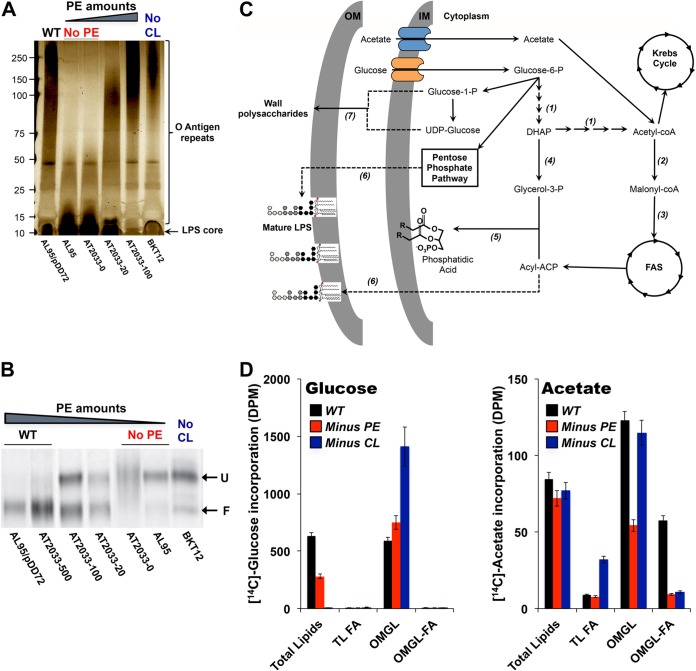FIG 4.
Alterations in E. coli major phospholipids cause defects in LPS structure, outer membrane protein assembly, and cellular envelope homeostasis. (A) Lipopolysaccharides from E. coli WT and phospholipid-altered cells separated by SDS-PAGE and visualized by silver staining. (B) OmpF folding assessment by differential electrophoretic mobility after heat denaturation in WT and phospholipid-altered cells. F, folded; U, unfolded. (C) Schematic representation of the metabolic pathways leading to incorporation of glucose- and acetate-derived carbon into phospholipids and outer membrane glycolipids, such as LPS. 1, glycolytic pathway; 2, acetyl-CoA carboxylase; 3, malonyl-CoA:ACP transacylase; 4, glycerol-3-P dehydrogenase; 5, glycerol-3-P and lysophosphatidic acid acyltransferases; 6, LPS biosynthetic pathway; 7, cell surface and wall polysaccharide biosynthetic pathway. DHAP, dihydroxyacetone phosphate; FAS, fatty acid synthesis. (D) Bacterial remodeling assessment using radioactive nutrient labeling. Incorporation of 14C-labeled glucose (left) and 14C-labeled acetate (right) into cellular envelope components is measured after extraction of total lipids (TL) or isolation of outer membrane glycolipids (OMGL) from cells cultured in the presence of radiolabeled nutrient. Incorporation of radioactivity into the fatty acyl (FA) moieties is evaluated after saponification. DPM, disintegrations per minute. Mean values ± SEM are shown; n = 3 per group.

